
c18. CW keyers and paddles
Links to other pages:
 C11 technical topics I
C11 technical topics I
 C12. Tecnical topics II
C12. Tecnical topics II
 C21 QRP notes *** Note that some topics are moved to
this page ***
C21 QRP notes *** Note that some topics are moved to
this page ***
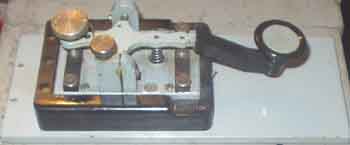
The Junker handpump
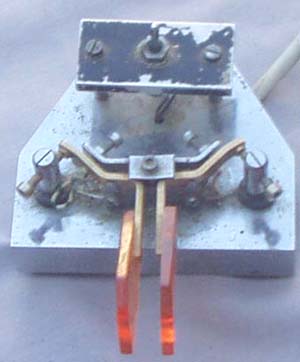 |
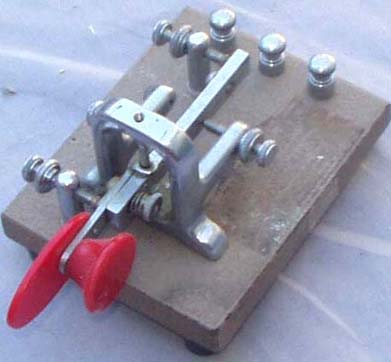 |
a) Morse paddle with PTT facility for simpler transmitter
operation
Have mounted a PTT-switch on the paddles for my shack. It
simplifies operation and you have 100% control, a
nd easy to switch between RX and TX, and back again if you wish
to check that you are not transmitting when you shouldn't.
Since it will always be a time delay when you throw the button to
you can start transmitting it is no need for time delay, but
it may be another idea if you use no-control cw meteorscatter
operation
The paddle is good quality, but haven't the faintest idea who
made it, bought it from a very drunk Finnish OPR at
Aannaboda VHF meeting, who may be the producer, and definitely
wanted to buy it back the next day, but I refused.
b) The Vibro-keyer
paddle.
Since I worked at Rogaland radio in 69-70 we had some ideas what
was the best paddles and it was two different makes
to choose between, Autronica and Vibrokeyer paddles. Bought my
own vibro-paddle, and used it for a year, until I got a
better German construction which also could operate SQUEEZE, and
it was used until 1987, when I got the Finnish paddle
mentioned above. Vibrokeyer is a part of the older vibroplexer.
It seems possible to drill some holes in the iron block, and
mount a PTT switch on the paddle, but I keep it only as a reserve
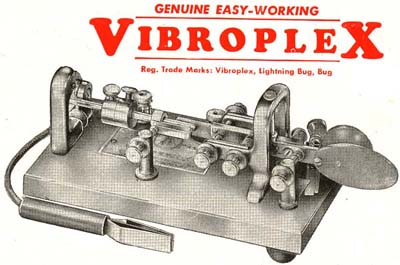 |
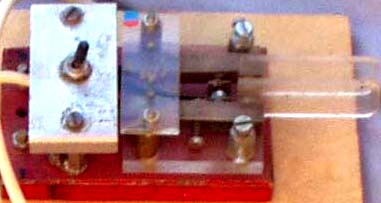 |
a) The original vibroplex keyer
(shown as a reference only) from an advertisment in ARRL handbook
1948
b) My second paddle has also a PTT-switch.
Somebody like footswitch, but it is just the habit, the most
important it to have an
efficient way to operate where you don't have to move the arm
from operational position.
Got the paddle from a German who were manufacturing ELBUGs, the
price was DKK 25,- (US $3.50) in 1970.
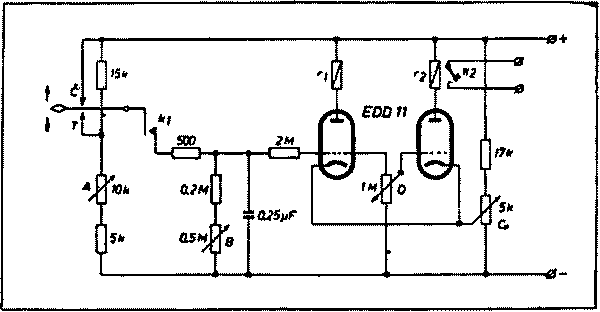
Electronic keyer anno 1948.
OZ7BQ's electronic keyer is quite famous world-wide, here is
another construction.
This keyer will work with common-cathode twin-triodes (EDD11),
probably 6J6 (ECC90) or ECC40 as well as the more common
12AU7/ECC82. It was first shown in czech amateur radio
publication "Kratke Viny", and later in Amatör Radio
6/7 1949, unfortunately the Norwegian editor never learned about
proper quoting, and remarks about the components, but I believe
that r1 and r2 are different windings on a telegraph relay, it
might be Siemens Trls 43 or Trls 64a. Potm. B
sets most probably the speed, and potm A adjusts
the dot/dash ratio. Mechanical operational time for the relay
also influence the properties.
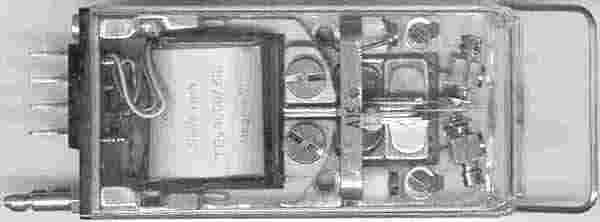 |
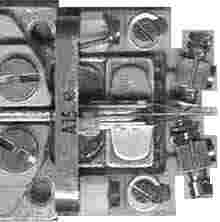 |
A somewhat "modern" telegraph relay (Siemens Trls 64a
?) for telex equipment, which are commonly found in Europe, it
was probably used a German WW2 type trls 43a in the construction,
see page 11d .
A homebrew "paddle" (manipulator) uses often a part of
another telegraph relay

Special screwdriver to open telegraph relays, but you usually
manage without much problems by using pliers or side-cutters
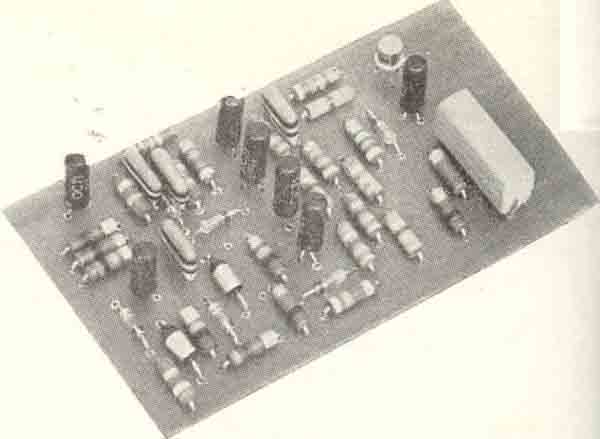
OZ7AQ solidstate elbug anno 1965, described in "OZ" nr
2/65 pp42-47.
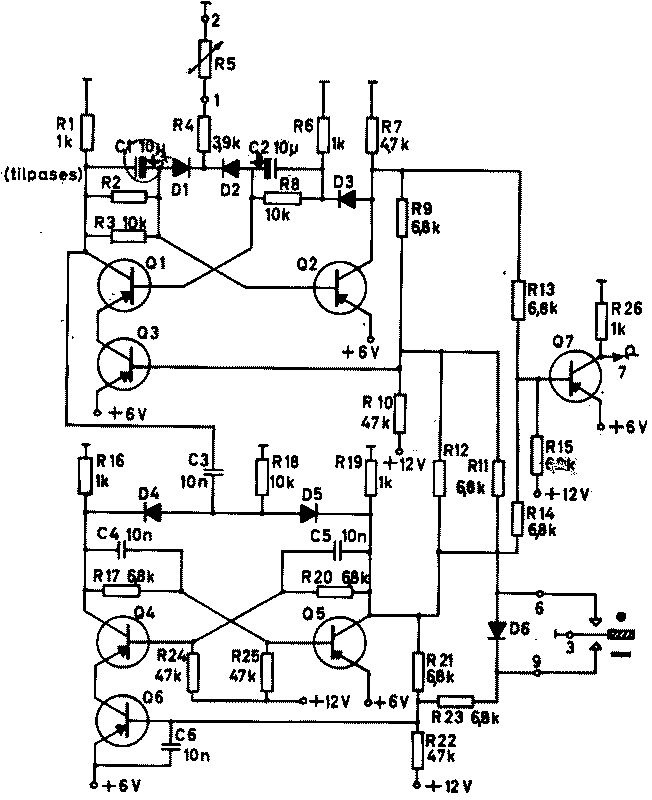
It is a straightful construction which most amateurs could
manage, and was very popular in Scandinavia during 1965-1970. It
was copied by many amateurs including myself, and I've also seen
some interest by radio operators at coast station (LGB/LGQ).
Transistors are 2N525 (or OC71), and it has germanium diodes
(OA81/OA85 or 1N34A). Construction of the paddle is shown on
pp48-49 in same issue.
Variable memory cmos keyer.
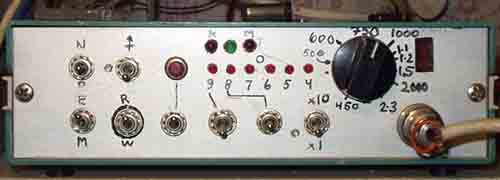 |
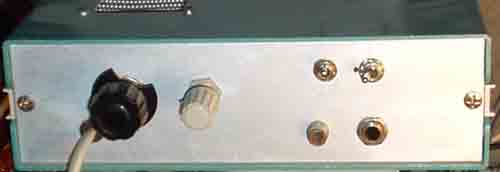 |
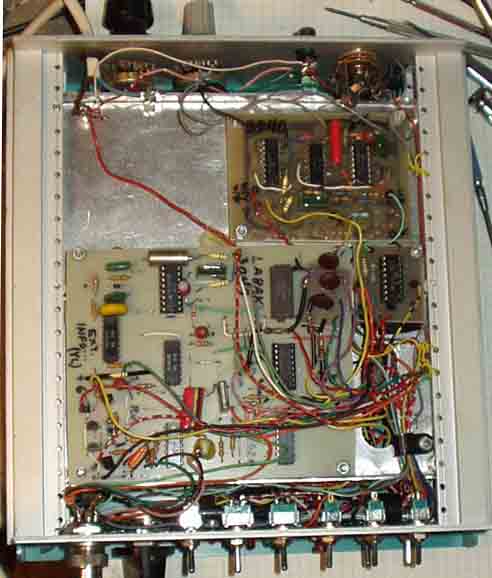 |
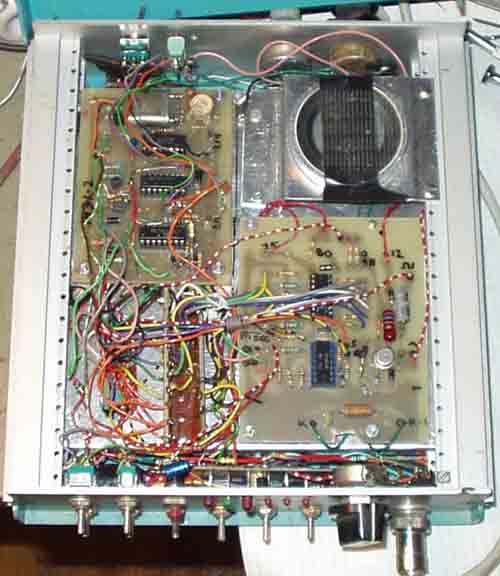 |
My own 2nd version of memory keyer, built around 1980. It is
based on K3CU's article in Februar and August 1978: The micro-TO
message keyer.
Perhaps not so easy to understand for a HF operator, but
considerable modications are required for CW meteorscatter
operation, and a HB9ABO elbug is added for normal cw operation.
Max speed is 2300LPM.
See DUBUS Technik II.
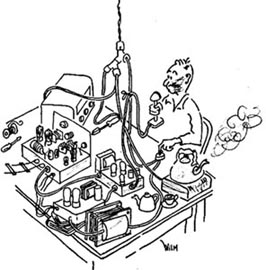
.... I really don't understand where the hum comes from.

BACK to AR experiment mainpage
Last updated 2004.11.28